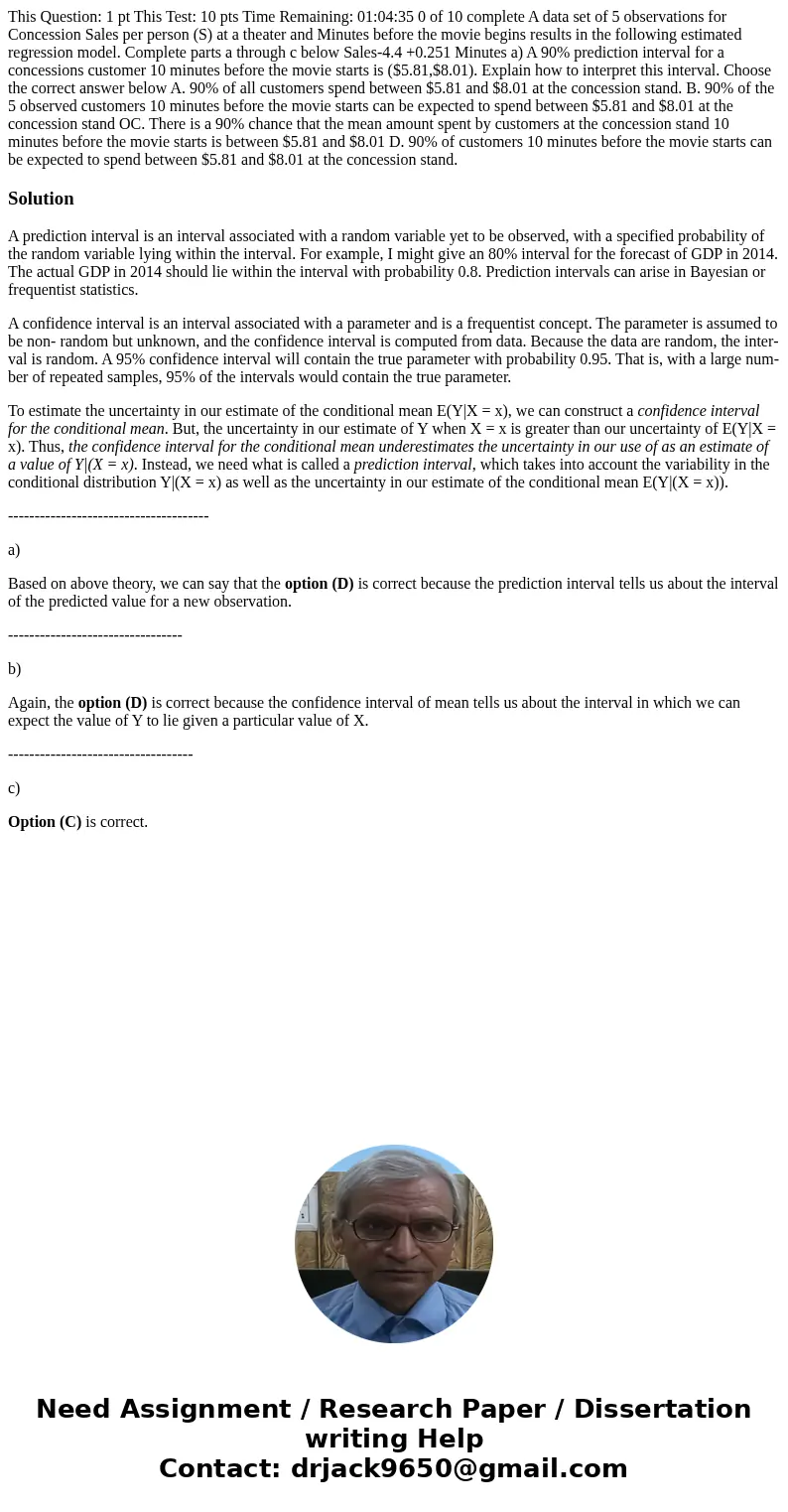This Question 1 pt This Test 10 pts Time Remaining 010435 0
Solution
A prediction interval is an interval associated with a random variable yet to be observed, with a specified probability of the random variable lying within the interval. For example, I might give an 80% interval for the forecast of GDP in 2014. The actual GDP in 2014 should lie within the interval with probability 0.8. Prediction intervals can arise in Bayesian or frequentist statistics.
A confidence interval is an interval associated with a parameter and is a frequentist concept. The parameter is assumed to be non- random but unknown, and the confidence interval is computed from data. Because the data are random, the interval is random. A 95% confidence interval will contain the true parameter with probability 0.95. That is, with a large number of repeated samples, 95% of the intervals would contain the true parameter.
To estimate the uncertainty in our estimate of the conditional mean E(Y|X = x), we can construct a confidence interval for the conditional mean. But, the uncertainty in our estimate of Y when X = x is greater than our uncertainty of E(Y|X = x). Thus, the confidence interval for the conditional mean underestimates the uncertainty in our use of as an estimate of a value of Y|(X = x). Instead, we need what is called a prediction interval, which takes into account the variability in the conditional distribution Y|(X = x) as well as the uncertainty in our estimate of the conditional mean E(Y|(X = x)).
--------------------------------------
a)
Based on above theory, we can say that the option (D) is correct because the prediction interval tells us about the interval of the predicted value for a new observation.
---------------------------------
b)
Again, the option (D) is correct because the confidence interval of mean tells us about the interval in which we can expect the value of Y to lie given a particular value of X.
-----------------------------------
c)
Option (C) is correct.

 Homework Sourse
Homework Sourse